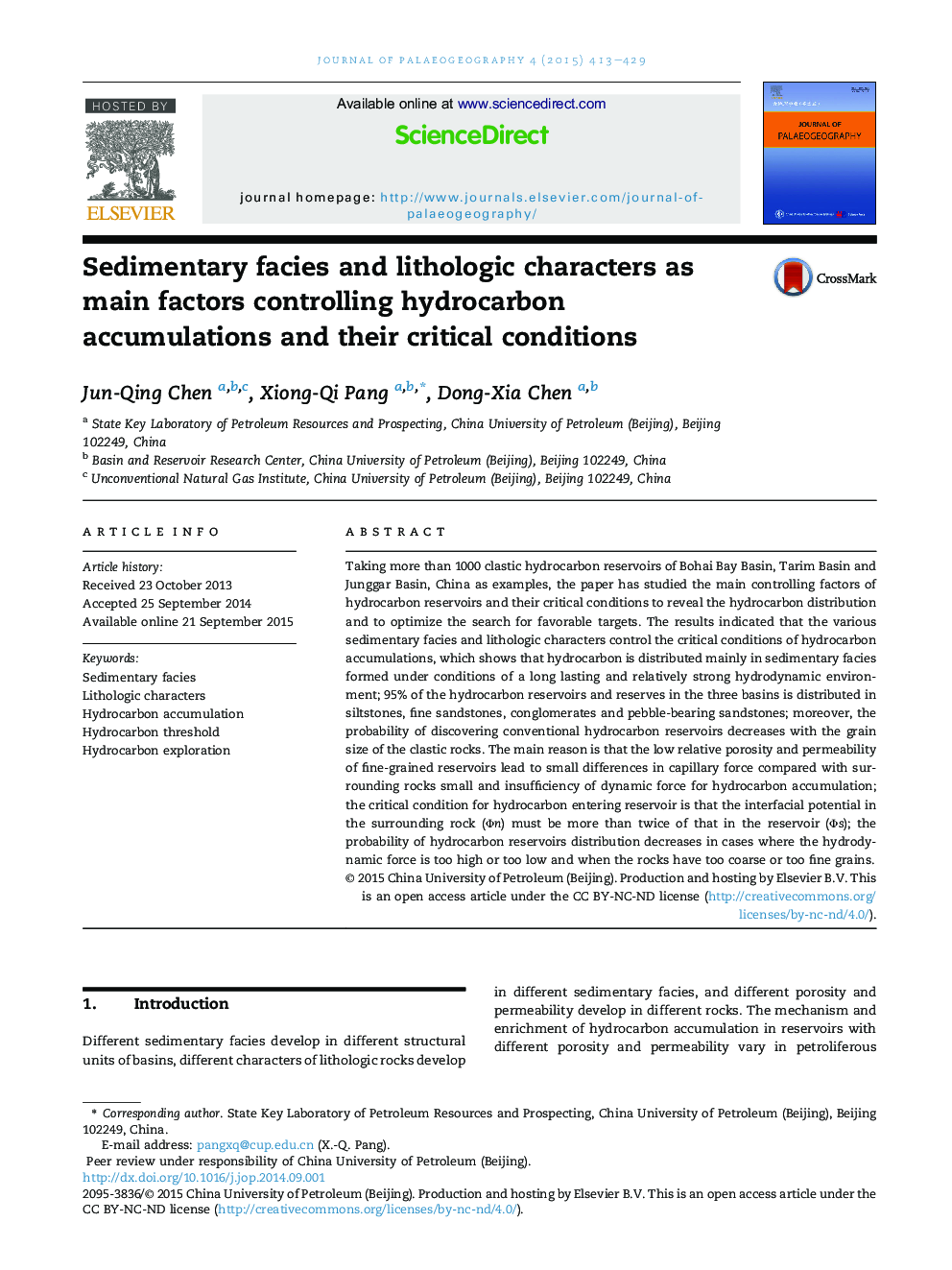| Article ID | Journal | Published Year | Pages | File Type |
|---|---|---|---|---|
| 4580965 | Journal of Palaeogeography | 2015 | 17 Pages |
Taking more than 1000 clastic hydrocarbon reservoirs of Bohai Bay Basin, Tarim Basin and Junggar Basin, China as examples, the paper has studied the main controlling factors of hydrocarbon reservoirs and their critical conditions to reveal the hydrocarbon distribution and to optimize the search for favorable targets. The results indicated that the various sedimentary facies and lithologic characters control the critical conditions of hydrocarbon accumulations, which shows that hydrocarbon is distributed mainly in sedimentary facies formed under conditions of a long-lived and relatively strong hydrodynamic environment; 95% of the hydrocarbon reservoirs and reserves in the three basins is distributed in siltstones, fine sandstones, lithified gravels and pebble-bearing sandstones; moreover, the probability of discovering conventional hydrocarbon reservoirs decreases with the grain size of the clastic rock. The main reason is that the low relative porosity and permeability of fine-grained reservoirs lead to small differences in capillary force compared with surrounding rocks small and insufficiency of dynamic force for hydrocarbon accumulation; the critical condition for hydrocarbon entering reservoir is that the interfacial potential in the surrounding rock (Φn) must be more than twice of that in the reservoir (Φs); the probability of hydrocarbon reservoirs distribution decreases in cases where the hydrodynamic force is too high or too low and when the rocks have too coarse or too fine grains.
